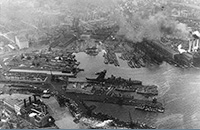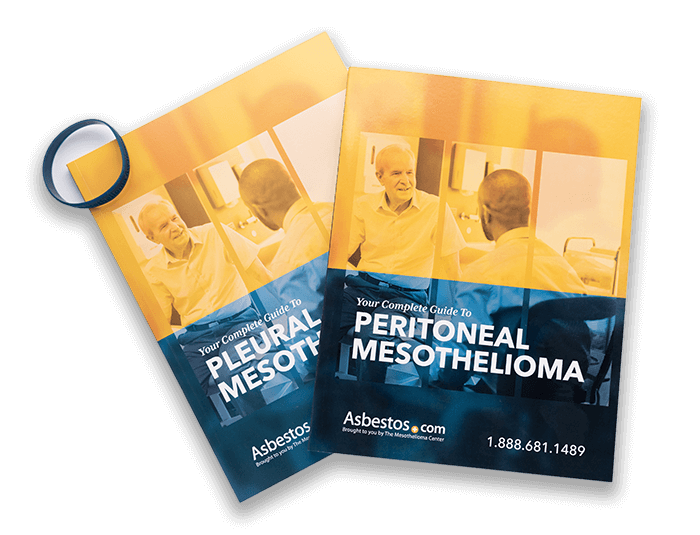Brooklyn Navy Yard
The Brooklyn Navy Yard, also known as The United States Navy Yard, New York and the New York Naval Shipyard, became an active naval installation in 1806. During the years between 1939 and 1945, the shipyard's workforce increased to 70,000 employees, many of whom were women who worked as mechanics and technicians in support of the war effort.

Written by Aaron Munz | Edited By Walter Pacheco | Last Update: August 22, 2023
During the time when America was part of World War II, asbestos exposure was common to everyone who worked at the facility. Protective clothing for a foundryman or welder included asbestos leggings, aprons and gloves. Inside the asbestos mixing room, employees mixed magnesia and asbestos fiber for insulation.
In 1966, Secretary of Defense Robert McNamara closed the Brooklyn Navy Yard because it cost too much to keep open. But in 1971, the City of New York reopened it as an industrial park.
In 2021, a review of medical literature looked at the risk of asbestos-related cancer among sailors. It found that sailors from some countries have more than double the risk of developing mesothelioma.
Asbestos Products at Brooklyn Navy Yard’s Shops
The pipe shop onsite at the shipyard used asbestos in the lagging it manufactured. That cloth was then used to act as insulation around hot water and steam pipes in the vessels that were repaired at the shipyard. The boiler shop and the central power plant also used asbestos produced on the premises as insulation.
Exposure wasn’t limited to workers who manufactured products containing the toxic mineral. A 1941 personnel needs analysis noted that 19 different trades handled asbestos. Extending and repairing the boiler shop, central power plant and other areas led to heavy exposure.
Some of these jobs were riskier than others. Boiler workers and insulators were especially at risk of high exposure.
A 2017 study evaluated the risk of mesothelioma among shipyard workers. The workers exposed to a moderate amount of asbestos were about four times more likely to die of mesothelioma.
Safety Measures
People in the pipe shop mixed asbestos with magnesia under a special fan that helped keep the air clean. In 1940, they made the fan bigger to improve conditions. Workers had to roll up their sleeves to prevent asbestos dust accumulation. They used special goggles and wash their skin to make sure they didn’t take asbestos home with them.

Learn about your diagnosis, top doctors and how to pay for treatment.
Get Your Free GuideMedical Officer Recommends Monitoring Employee Health
In April 1940, the medical officer assigned to the Brooklyn Navy Yard issued a report. It included his own observations of the conditions at the facility and the standards suggested by the U.S. Public Health Service.
In his report the medical officer advised that:
- Sandblasters should receive semi-annual chest X-rays
- All asbestos workers should receive annual chest X-rays in January
- Industrial X-ray and radium workers should receive a bimonthly complete blood analysis
- Pickling plant workers in the coppersmith shop should receive semi-annual chest X-rays
- Slate and red putty workers in the paint shop should receive semi-annual chest X-rays
- Spray painters should receive an annual workup that included a chest X-ray and blood tests
- Brush painters did not need any testing unless they were continuously assigned to working with lead paint.
This medical surveillance program was made effective in May 1940.
This Page Contains 4 Cited Articles
The sources on all content featured in The Mesothelioma Center at Asbestos.com include medical and scientific studies, peer-reviewed studies and other research documents from reputable organizations.
- Lemen, R.A. and Landrigan, P.J. (2021, August). Sailors and the Risk of Asbestos-Related Cancer. Retrieved from https://www.ncbi.nlm.nih.gov/pmc/articles/PMC8394725/
- Rusiecki, J. et al. (2017, March 23). Mortality among Coast Guard Shipyard workers: A retrospective cohort study of specific exposures. https://www.tandfonline.com/doi/abs/10.1080/19338244.2017.1289891
- Brooklyn Navy Yard. (n.d.). History of the Yard. https://www.brooklynnavyyard.org/about/history
- Columbia. (n.d.). Health and Safety Issues in the Brooklyn Navy Yard in the Inter-War Years. http://www.columbia.edu/~jrs9/BNY-HS-interwar.html







